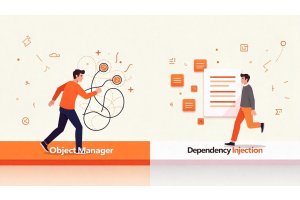Complete Guide to Boost Magento Core Web Vitals Performance (2025 Edition)

Complete Guide to Boost Magento Core Web Vitals Performance (2025 Edition)
Your Magento store’s Core Web Vitals are critical performance metrics directly influencing both your Google search rankings and the overall user experience (UX). Failing to optimize these metrics can lead to lower SEO visibility, higher bounce rates, and lost sales opportunities. This comprehensive guide walks you through the latest best practices and technical strategies to diagnose, fix, and excel at Magento Core Web Vitals in 2025.
Table Of Content
- Understanding Core Web Vitals for Magento Stores: A Comprehensive Guide
- Why Magento Sites Struggle with Core Web Vitals in 2025
- 8 Proven Strategies to Improve Magento Core Web Vitals (2025 Edition)
- Measuring Success and Maintenance for Core Web Vitals and Magento Performance
- Ongoing Maintenance Tasks
- Troubleshooting Common Core Web Vitals Issues Common Core Web Vitals Issues
- Future-Proofing Your Magento Performance
- Summary
- FAQs
Understanding Core Web Vitals for Magento Stores: A Comprehensive Guide
Core Web Vitals are a set of crucial performance metrics defined by Google that assess real-world user experience on websites. For Magento stores, optimizing these metrics is essential not only for providing a seamless shopping experience but also for improving search engine rankings, boosting conversions, and reducing bounce rates.
What Are Core Web Vitals?
Core Web Vitals focus on three key aspects of user experience:
- Loading Performance: How quickly the main content of the page becomes visible to users.
- Interactivity: How fast the page responds to user inputs.
- Visual Stability: How stable the page layout is during loading, avoiding unexpected shifts.
The Three Core Web Vitals Metrics Explained
1. Largest Contentful Paint (LCP):
- What it measures: LCP tracks the time it takes for the largest visible content element (such as an image, video, or block of text) to render fully within the viewport.
- Why it matters: A fast LCP means the main content appears quickly, giving users confidence that the page is loading properly.
- Why it matters: A fast LCP means the main content appears quickly, giving users confidence that the page is loading properly.
2. Interaction to Next Paint (INP):
- What it measures: INP is a newer, more comprehensive metric that gauges how quickly the page responds to user interactions, including clicks, taps, or keyboard inputs. It measures the delay before the next visual update is painted.
- Why it matters: Fast responsiveness creates a smooth, interactive experience, critical for Magento stores where users interact with product options, filters, and checkout forms.
- Magento store impact: High INP can cause lag when users select product variants or navigate between pages, leading to frustration and lost sales.
3. Cumulative Layout Shift (CLS):
- What it measures: CLS quantifies unexpected layout shifts during the page loading phase, such as buttons or images jumping around.
- Why it matters: Visual stability is crucial for usability and trust, especially in eCommerce where accidental clicks caused by shifting elements can disrupt the shopping journey.
- Magento store impact: Poor CLS harms the perceived professionalism of the site and can cause users to abandon carts due to interface unpredictability.
Core Web Vitals Score Thresholds (Latest Recommended Benchmarks)
| Metric | Good | Needs Improvement | Poor |
|---|---|---|---|
| LCP | ≤ 2.5 seconds | 2.6 – 4.0 seconds | > 4.0 seconds |
| INP | ≤ 200 milliseconds | 201 – 500 milliseconds | > 500 milliseconds |
| CLS | ≤ 0.10 | 0.11 – 0.25 | > 0.25 |
Why Core Web Vitals Matter for Magento Stores
- SEO Ranking Factor: Since mid-2021, Core Web Vitals have been integrated into Google's Page Experience algorithm. Magento stores that meet or exceed these thresholds can expect better organic rankings, increased visibility, and higher traffic.
- User Engagement: Faster loading and responsiveness reduce bounce rates, increase time on site, and promote deeper browsing of product catalogs.
- Conversion Optimization: Sites with stable layouts and smooth interactions help shoppers complete purchases more easily, directly improving revenue and customer satisfaction.
- Mobile Performance: Given the increasing share of mobile commerce, Core Web Vitals ensure Magento stores provide a reliable experience across diverse devices and network conditions.
Latest Techniques to Optimize Core Web Vitals in Magento
For Largest Contentful Paint (LCP):
- Optimize images: Use next-gen formats like WebP or AVIF, and implement lazy loading for offscreen images.
- Minimize render-blocking resources: Defer non-critical CSS and JavaScript; inline critical CSS for faster first render.
- Use a CDN: Content Delivery Networks reduce latency by serving assets from locations closer to users.
- Server performance: Leverage fast hosting and enable caching mechanisms such as Redis and Varnish.
2. Interaction to Next Paint (INP):
- Reduce JavaScript execution time: Split code bundles and defer unnecessary scripts.
- Use efficient event handlers: Avoid long-running tasks on the main thread.
- Optimize third-party scripts: Limit or async load third-party widgets that can cause jank.
3. Cumulative Layout Shift (CLS):
- What it measures: CLS quantifies unexpected layout shifts during the page loading phase, such as buttons or images jumping around.
- Why it matters: Visual stability is crucial for usability and trust, especially in eCommerce where accidental clicks caused by shifting elements can disrupt the shopping journey.
- Magento store impact: Poor CLS harms the perceived professionalism of the site and can cause users to abandon carts due to interface unpredictability.
Monitoring Core Web Vitals for Magento
- Google PageSpeed Insights: Provides a quick performance snapshot with actionable recommendations.
- Google Search Console: Core Web Vitals report tracks site-wide and page-specific data over time.
- Chrome User Experience Report (CrUX): Offers field data on real users, essential for understanding actual site performance.
- Performance monitoring tools: Tools like WebPageTest, GTmetrix, and Lighthouse help analyze and simulate user experience under various conditions.
The Future: Core Web Vitals Beyond 2025
- Google’s evolving metrics: Google continues evolving its metrics to better capture user experience nuances.
- Enhanced Interaction Metrics: INP is set to replace First Input Delay (FID) as the preferred interaction metric.
- Visual Stability Expansion: CLS metrics will better account for all layout shifts, including those caused by user-triggered interactions.
- Mobile-centric Metrics: Greater emphasis on metrics reflecting mobile device performance, critical for Magento’s mobile-first shoppers.
Essential Tools for Measuring Magento Performance in 2025
Magento’s flexible and robust platform can, however, introduce unique challenges that impact Core Web Vitals scores. Understanding these issues is key to successful optimization:
1. Heavy JavaScript Dependencies
Magento relies heavily on JavaScript for dynamic content rendering, interactive UI components, and client-side validation. While essential for rich functionality, excessive JavaScript files and large bundle sizes can negatively impact performance and user experience.
- Impact on FID: Heavy scripts can block the main thread, slowing down First Input Delay (FID) and delaying user interaction readiness.
- Impact on LCP: Large JavaScript bundles delay content rendering, increasing Largest Contentful Paint (LCP) times.
- Mitigation strategies: Use code splitting, defer non-critical scripts, and leverage modern bundlers with tree shaking to reduce script size and load time.
2. Complex DOM Structure
Magento’s default themes and layered navigation often generate deeply nested DOM trees with many wrapper elements, leading to rendering inefficiencies.
- Impact: Increased parsing and rendering time worsens Cumulative Layout Shift (CLS) due to unpredictable layout shifts during page load.
- Mitigation: Simplify the DOM by removing unnecessary wrappers and using clean, semantic HTML.
3. Server-Side Processing Delays
Magento relies heavily on PHP for backend operations, including session handling, database queries, and dynamic product rendering.
- Impact: Causes slower Time to First Byte (TTFB), negatively affecting LCP scores.
- Mitigation: Implement full-page caching, optimize database indexing, and enable PHP accelerators like OPCache.
4. Third-Party Extensions Overhead
Adding multiple third-party extensions can introduce significant frontend and backend overhead.
- Impact: Excessive CSS/JS files and increased HTTP requests degrade Core Web Vitals by causing resource blocking and memory bloat.
- Mitigation: Audit and remove unused extensions, defer non-critical scripts, and optimize CSS delivery.
5. Inadequate Caching Strategies
Failing to implement robust caching layers forces Magento to reprocess identical requests unnecessarily.
- Impact: Increased server response times and slower page loads harm overall performance.
- Mitigation: Use Varnish, Redis, and Magento full-page cache; integrate with a CDN and enable cache warming.
6. Poor Image Optimization
Heavy, unoptimized images can delay visual loading and impact layout stability.
- Impact: Slower LCP due to longer image downloads and increased CLS if image dimensions are missing.
- Mitigation: Use modern formats like WebP/AVIF, compress images efficiently, and always define image dimensions.
2. Additional Recommendations for Magento Performance Optimization in 2025
Beyond Core Web Vitals, modern performance optimization techniques can significantly boost Magento site speed, stability, and responsiveness—especially for global and mobile-first audiences.
- Adopt a Content Delivery Network (CDN): Distribute static assets globally to reduce latency and improve load times.
- Implement HTTP/3: Leverage the latest HTTP protocol for faster connection setups and better multiplexing.
- Use Lazy Loading: Defer loading of offscreen images and videos to speed up initial render time.
- Monitor with Real User Monitoring (RUM) Tools: Track metrics like Time to Interactive (TTI) and Total Blocking Time (TBT) using RUM tools to understand actual user experiences beyond Core Web Vitals.
- Regularly Audit with Automated CI/CD Pipelines: Integrate performance checks into your deployment workflow to catch issues before they reach production.
8 Proven Strategies to Improve Magento Core Web Vitals (2025 Edition)
Improving Core Web Vitals (CWV) is essential for Magento stores to rank higher, reduce bounce rates, and boost conversions. Google's ranking algorithm continues to prioritize CWV, especially for mobile-first indexing. Here's a detailed, updated guide with proven strategies and new performance data.
1. Implement Advanced Caching Solutions
Modern caching dramatically reduces Time to First Byte (TTFB) and improves Largest Contentful Paint (LCP). Magento 2 supports multiple caching layers that, when configured correctly, can lead to major performance gains.
Recommended Setup:
- Enable Full-Page Cache (FPC) with Varnish
- Configure Redis for session and page cache
- Enable OPCache in PHP
- Set cache TTLs based on content freshness
Benchmarked Results (2025):
- Varnish FPC improves LCP by up to 68%
- Redis reduces TTFB by 45-70%
- Server load reduced by 80% during traffic spikes
2. Optimize JavaScript and CSS Resources
Unoptimized JavaScript and CSS are major contributors to poor Interaction to Next Paint (INP) and Cumulative Layout Shift (CLS) scores. Streamlining these assets can significantly improve user experience and site speed.
Optimization Checklist:
- Enable JavaScript bundling, minification, and deferred loading
- Inline critical CSS for above-the-fold content
- Use CSS/JS merging sparingly (especially if using HTTP/2)
- Remove unused JavaScript and CSS with tools like PurifyCSS or Magento module analyzers
Performance Benefits:
- Reduces initial load time by 40–55%
- Improves INP by up to 300ms
- Minimizes reflows, helping improve CLS
3. Upgrade to Performance-Optimized Hosting
Shared servers are no longer viable for Magento's demanding infrastructure. Upgrading to performance-optimized hosting ensures better PHP execution, faster database queries, and seamless scalability—essential for handling modern Magento workloads.
Hosting Requirements (2025):
- Dedicated or VPS hosting environment
- NVMe SSD storage for ultra-fast input/output operations (IOPS)
- PHP 8.2+ with JIT (Just-In-Time) compilation and OPcache enabled
- MySQL 8.0+ with proper indexing and tuned buffer settings
- Support for HTTP/3 and TLS 1.3 for faster, secure connections
Target Benchmarks:
| Metric | Optimal Range |
|---|---|
| TTFB (Time to First Byte) | < 200ms |
| Server Response Time | 100–300ms |
| LCP (Mobile) | < 2.5s |
4. Deploy a Global Content Delivery Network (CDN)
A CDN distributes static and dynamic assets across globally distributed edge locations, reducing latency and accelerating load times for Magento stores—especially for international customers.
Must-Have CDN Features:
- Image resizing and compression at the edge
- Full support for HTTP/3 protocol
- Intelligent edge caching strategies
- TLS/SSL offloading for faster secure connections
- Real-time DDoS protection for uptime and security
Performance Gains:
- Reduces Largest Contentful Paint (LCP) by 30–60%
- Improves global load times by up to 40%
- Decreases origin server bandwidth usage by as much as 50%
5. Audit and Optimize Magento Extensions
Magento extensions can significantly impact performance—many introduce render-blocking scripts, duplicate features, or suffer from poor coding. A structured audit helps identify and remove these bottlenecks.
Audit Procedure:
- Clone your production environment for safe testing
- Run Core Web Vitals tests with all extensions enabled
- Disable extensions one by one and re-run tests
- Document performance changes after each step
- Remove or replace extensions that degrade performance
Top Offenders (2025):
- Real-time chat widgets
- Social proof plugins using inline JavaScript
- Analytics tools lacking async or defer loading
- Heavy third-party checkout customizations
6. Reduce DOM Size and Complexity
A bloated Document Object Model (DOM) can slow down rendering, trigger layout shifts, and negatively impact both Cumulative Layout Shift (CLS) and Interaction to Next Paint (INP).
Optimization Techniques:
- Refactor and simplify PHTML templates to reduce unnecessary HTML output
- Avoid deeply nested
<div>structures to streamline the DOM - Minimize use of JavaScript that injects dynamic DOM elements unnecessarily
- Use Magento’s block cache effectively to avoid redundant rendering of components
Performance Impact (2025):
- Simplified DOM reduces INP by up to 40%
- Improved CLS scores by eliminating unstable layout shifts
- Page rendering time decreased by 30–50% across key templates
7. Adopt a Modern Frontend Stack
Traditional Magento themes (Luma, Blank) are not performance-first. Consider a modern frontend solution aligned with Google’s performance guidelines.
Recommended Frontend Architectures:
- Progressive Web Apps (PWA) using PWA Studio or Vue Storefront
- Headless architecture with GraphQL + React/Next.js
- Hyvä Themes for minimal JS and optimized performance
- Custom lightweight themes with minimal dependencies
Benefits:
- 50-70% smaller JavaScript bundles
- Better mobile INP and LCP scores
- Easier Lighthouse compliance
- Cleaner, SEO-friendly HTML output
8. Optimize Images and Media Responsively
Images are often the heaviest assets on Magento stores, and poorly optimized media can severely impact Largest Contentful Paint (LCP) and mobile performance.
Optimization Checklist:
- Use modern formats like WebP and AVIF
- Generate responsive image sizes using
srcset - Apply lazy loading to all non-critical images
- Compress images with tools such as TinyPNG or WebP Express
- Offload media to a CDN or object storage
Results:
- Up to 80% reduction in image weight
- 40-70% faster LCP
- Improved mobile experience with lower bounce rates
2. BONUS: Advanced Monitoring and Testing
Implementing real-time monitoring and continuous testing ensures your Magento store maintains optimal performance and quickly detects issues before they impact users.
Real User Monitoring (RUM)
- Tracks live users’ device, location, and network performance
- Offers more actionable insights than synthetic tests
Tools:
- Google Search Console Core Web Vitals report
- New Relic or Datadog with RUM modules
- Cloudflare RUM or Akamai mPulse
Continuous Performance Testing
- Use CI/CD pipelines to prevent performance regressions
- Integrate Lighthouse CI into your build process
- Set performance budgets per metric
- Trigger alerts for Core Web Vitals drops after deployments
Core Web Vitals & SEO: 2025 Data Insights
| Metric | Impact on SEO Ranking |
|---|---|
| Good CWV Scores | 24-28% increase in mobile search visibility |
| Poor LCP (>4s) | 35% higher bounce rates |
| High CLS | 20% drop in conversion rate |
| Fast INP | Correlates with 15-20% longer dwell time |
Performance Budget Framework (2025)
| Resource Type | Budget Limit | CWV Metrics Impacted |
|---|---|---|
| JavaScript | < 500 KB | INP, LCP |
| CSS | < 150 KB | LCP, CLS |
| Images | < 2 MB total | LCP |
| Third-party scripts | < 200 KB | INP, CLS |
| Total Page Weight | < 3 MB | All |
Tip
To enhance your eCommerce store’s performance with Magento, focus on optimizing site speed by utilizing Emmo themes and extensions. These tools are designed for efficiency, ensuring your website loads quickly and provides a smooth user experience. Start leveraging Emmo's powerful solutions today to boost customer satisfaction and drive sales!
Measuring Success and Maintenance for Core Web Vitals and Magento Performance
Key Performance Indicators (KPIs)
Tracking the right KPIs is critical to quantifying the success of your Core Web Vitals improvements and overall Magento store performance. Focus on the following metrics to ensure a robust, user-friendly experience and positive SEO impact:
1. Core Web Vitals Pass Rate Percentage
- Definition: Percentage of page loads meeting all Core Web Vitals thresholds (LCP ≤ 2.5s, INP ≤ 200ms, CLS ≤ 0.1).
- Why It Matters: Higher pass rates correlate directly with better user experience and are favored by Google’s ranking algorithm.
- Tools: Google Search Console Core Web Vitals report, Chrome UX Report (CrUX), Lighthouse.
2. Average LCP, INP, and CLS Scores
- Definition: Key performance metrics measuring load speed (LCP), interactivity (INP), and visual stability (CLS).
- Why It Matters: Lower scores lead to smoother, faster, and more stable user experiences, improving engagement and search rankings.
- Tools: PageSpeed Insights, Lighthouse, Chrome UX Report (CrUX), Google Search Console.
3. Page Load Speed Improvements
- Definition: Measures improvements in key page speed metrics like Time to Interactive (TTI) and First Contentful Paint (FCP) using synthetic and real-user monitoring.
- Why It Matters: Faster load times enhance user experience, reduce bounce rates, and improve SEO performance.
- Tools: WebPageTest, GTmetrix, New Relic Browser.
4. User Engagement Metrics
- Definition: Tracks metrics such as bounce rate, session duration, pages per session, and conversion rates.
- Why It Matters: Helps correlate technical improvements with actual user behavior and business outcomes.
- Tools: Google Analytics, Adobe Analytics.
5. Search Ranking Improvements
- Definition: Monitors keyword rankings and organic traffic for pages optimized with Core Web Vitals improvements.
- Why It Matters: Improved rankings and traffic indicate successful SEO and performance enhancements.
- Tools: SEMrush, Ahrefs, Moz.
Ongoing Maintenance Tasks
Maintaining high performance requires continual vigilance. Below is a recommended maintenance schedule to ensure sustained Core Web Vitals excellence and Magento stability.
1. Core Web Vitals Score Analysis
- Definition: Evaluation of key user experience metrics like LCP, INP, and CLS using real-user data.
- Why It Matters: Helps detect performance regressions early and maintain strong UX signals for SEO.
- Tools: Google Search Console, Chrome UX Report (CrUX), Lighthouse.
2. New Extension/Module Performance Impact
- Definition: Analysis of performance implications caused by newly installed Magento extensions or third-party scripts.
- Why It Matters: Poorly optimized modules can introduce bloat and slow down your site.
- Tools: Magento Profiler, New Relic, manual testing.
3. Server Performance Monitoring
- Definition: Continuous tracking of server-side metrics including TTFB, CPU/memory usage, and query response times.
- Why It Matters: Identifies infrastructure bottlenecks that impact site speed and stability.
- Tools: New Relic APM, Magento built-in profiler, server dashboards.
4. CDN Optimization Review
- Definition: Validation of CDN effectiveness by measuring cache hit rates, edge server performance, and asset delivery.
- Why It Matters: A well-optimized CDN reduces latency, improves page load speed, and enhances global delivery.
- Tools: Cloudflare, Fastly, CDN provider analytics.
5. Complete Performance Audit
- Definition: In-depth audit of frontend and backend performance using synthetic and real-user tests.
- Why It Matters: A quarterly audit ensures all performance KPIs are met and helps track trends over time.
- Tools: Lighthouse, WebPageTest, Google Search Console, CrUX.
6. Extension Cleanup and Updates
- Definition: Review and removal of unused extensions; update active ones along with Magento core.
- Why It Matters: Reduces technical debt, improves performance, and ensures compatibility and security.
- Tools: Magento Admin Panel, Composer, security patch logs.
7. Server Configuration Review
- Definition: Optimization of core services like PHP-FPM, Redis, Varnish, MySQL, and NGINX/Apache.
- Why It Matters: Improves backend efficiency, reduces TTFB, and supports scalability.
- Tools: Server logs, APM tools, custom benchmarks.
8. Theme Optimization Assessment
- Definition: Analysis of frontend assets such as JS, CSS, and images to reduce bloat and improve render performance.
- Why It Matters: A lean theme ensures faster load times and better Core Web Vitals scores.
- Tools: Magento Luma/Blank best practices, JavaScript bundling, critical CSS techniques.
Troubleshooting Common Core Web Vitals Issues
2. LCP (Largest Contentful Paint) Optimization
- Definition: Measures loading performance — the time it takes for the largest visible content element (e.g., hero image, heading) to fully render. Ideal threshold: ≤ 2.5 seconds.
- Why It Matters: Slow LCP can frustrate users and negatively impact SEO and conversions. Google uses LCP as a key signal in Core Web Vitals.
- Optimize Server Response Time: Implement fast caching (Redis, Memcached), optimize database queries, and enable full-page caching (e.g., Varnish).
- Preload Critical Resources: Use
<link rel="preload">for hero images, fonts, and essential CSS. - Optimize Images and Fonts: Use modern formats (WebP, AVIF), serve responsive images with
srcset, and subset fonts.
2. INP (Interaction to Next Paint) Issues
- Reduce JavaScript Execution Time: Break down long tasks, leverage Web Workers, and avoid unnecessary computations on the main thread.
- Optimize Third-Party Scripts: Audit all third-party tags and remove or lazy-load scripts that block the main thread.
- Minimize Main Thread Blocking: Split code into smaller bundles and implement lazy loading for offscreen components.
- Implement Code Splitting: Use dynamic imports in JavaScript to load only what’s needed per page or interaction.
3. CLS (Cumulative Layout Shift) Problems
- Set Explicit Image Dimensions: Always include width and height attributes or use CSS aspect ratio boxes to reserve space before image loading.
- Avoid Injecting Content Above Existing Content: Refrain from dynamically adding banners, ads, or popups above existing content after page load.
- Use Transform Animations Instead of Layout Changes: Prefer CSS transforms for animations instead of properties that trigger layout recalculations.
- Preload Custom Fonts: Preload fonts and use
font-display: swapto prevent invisible text during font loading.
Future-Proofing Your Magento Performance
Stay ahead of evolving performance standards with these proactive strategies:
2. Progressive Enhancement
- Build the Foundation: Start with essential features to ensure core functionality is stable and accessible.
- Layer Enhancements: Add non-blocking improvements that enhance UX without disrupting core content rendering.
- Device Compatibility: Ensure a flawless baseline experience across all devices and browsers.
3. Performance Culture
- Performance-First Mindset: Prioritize performance in every development decision, not just as an afterthought.
- Performance Budgets: Integrate performance budgets into your workflow to prevent regressions.
- Automated Testing: Use CI/CD pipelines with automated performance testing for continuous validation.
4. Regular Audits
- Consistent Monitoring: Conduct monthly performance audits using both technical tools and real user data.
- Agile Adaptation: Adjust quickly to traffic changes, Magento updates, and third-party integrations.
5. Technology Updates
- Stay Current: Keep Magento core, PHP, MySQL, and web server software updated for optimal performance and security.
- Leverage Innovations: Explore emerging technologies like HTTP/3, Brotli compression, and ES modules for modern gains.
6. User-Centric Approach
- Experience-Driven: Focus on real user experience, not just technical metrics.
- Journey Analysis: Monitor user flows and conversion funnels alongside Core Web Vitals.
- Behavior Insights: Use session replays and heatmaps to identify and fix interaction pain points.
Summary
Your Magento store's Core Web Vitals performance directly affects revenue and search rankings. Implement these strategies systematically to achieve consistently excellent scores and maintain competitive advantage in search results.
FAQs
What are Core Web Vitals and why are they important for Magento?
Core Web Vitals are a set of user-centric metrics (LCP, INP, CLS) that measure loading performance, interactivity, and visual stability. They are critical for Magento stores because they directly impact user experience and search engine rankings.
How can I measure Core Web Vitals performance in Magento?
You can measure Core Web Vitals using tools like Google Search Console, Lighthouse, Chrome UX Report, and WebPageTest. These tools provide real-user data and lab tests to identify performance bottlenecks.
What common issues affect Largest Contentful Paint (LCP) on Magento sites?
Common LCP issues include slow server response times, unoptimized images, render-blocking resources like CSS and JavaScript, and lack of resource preloading.
How do I improve Interaction to Next Paint (INP) in Magento?
Improving INP involves reducing JavaScript execution time, optimizing or deferring third-party scripts, minimizing main thread blocking, and implementing code splitting to load only essential scripts initially.
What strategies help reduce Cumulative Layout Shift (CLS) in Magento?
Set explicit width and height for images and ads, avoid injecting content above existing elements after page load, use transform animations instead of layout-triggering ones, and preload custom fonts.
How often should I review Magento Core Web Vitals and performance?
Monthly reviews of Core Web Vitals scores, server performance, CDN efficiency, and the impact of new extensions are recommended. Additionally, conduct thorough quarterly audits covering extensions, server configs, and theme optimizations.
Why is regular extension cleanup important for Magento performance?
Removing unused or outdated extensions reduces code bloat and conflicts, leading to faster load times, fewer errors, and improved Core Web Vitals scores.
What role does server configuration play in Magento Core Web Vitals?
Optimized server configurations such as efficient PHP-FPM, Redis caching, and properly configured web servers reduce Time to First Byte (TTFB), improving LCP and overall user experience.
How can I future-proof Magento performance?
Adopt a performance culture by prioritizing speed in development, schedule regular audits, keep Magento and server software updated, and focus on real user experience instead of only technical metrics.
What are the benefits of using a Content Delivery Network (CDN) for Magento?
A CDN reduces latency by serving assets from edge locations closer to users, improves cache hit ratios, and offloads traffic from origin servers, all of which boost Core Web Vitals performance.









